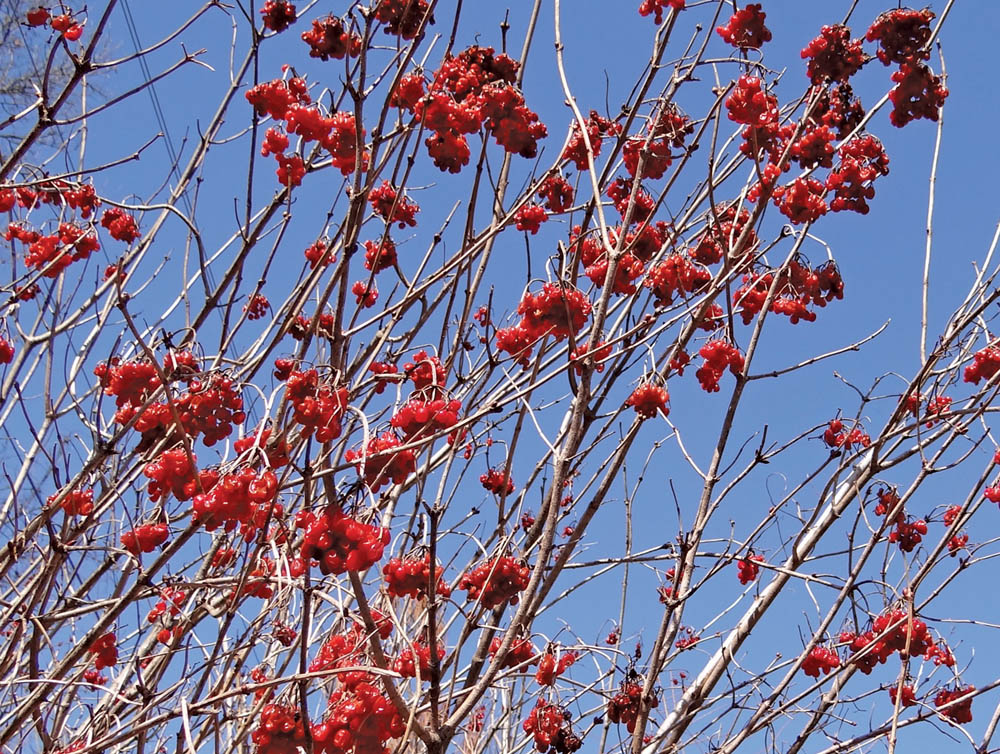



currently unavailable This Montana origin came from nurseryman, the late Clayton Berg and was grown from seed from the Skinner selections of Canada as well as Montana. I was growing a variety of these for the retail nursery trade and left a solid row of these to fruit to see how they would perform in Michigan. Actually the plants got to big to dig so I left them. One of the seedlings in particular was super high yielding and I named it after the Frank Zappa song. (Not exactly to infringe on copyright law but enough to give homage to a great musician.) "Movin-to-Montana" is a very heavy fruiter with dense clusters of fruit forming to the point where the branches bend over with fruit. The clusters are solid and the plant itself is a compact multibranched plant with broad spreading branches. This seems to help with the yield. This plant should be clonally produced as itself, but can be grown from seed to mark the Montana origin as well. The seed source ripens fruit early which is good for harvesting and the fruit is quickly consumed early in the winter as it is fully bletted and ready to be consumed by birds early in the season.
I have seen many rows of cranberrybush being planted and if you look closely in the fall after leaf fall you can see the difference in yield of many seedlings. There is a long hedge along a state highway I always marvel at. It is not that old of a hedgerow but out of 100 or so seedlings there a couple in there that are distinctly heavy fruiting. I have checked this over the last eight years and realize this trait is pretty consistent despite there is no care given to these plants and are growing in an open field with plenty of competition of grasses.
This selection could be used for jelly or wildlife bird food. The seeds are also consumed and distributed by chipmunks and birds. ( Don't forget to get 'a cuppa coffee' and start farmin dental floss bushes with your pygmy pony.) More homage without that great horn section and xylophone.
| Plant Specs |
| Genus & Species |
Viburnum trilobum |
| Seed Source |
Michigan, originally Canadian or Montana wild collected |
| Height (ft) |
6-8 Ft. with equal width to 10 ft. or more. |
| Pollination Requirements |
Self fertile. |
| Soil |
Adaptable to a wide range of soils including wetland. |
| Climate |
Zone 3-8 |
| Ease of Cultivation |
One of the easiest plants to grow from seed and root. Has potential as a fruit crop if processed. The high yields of this selection is greater than Hahs, Wentworth and Phillips. The quality of the fruit improves once frosted many times. It is not an edible plant really unless its processed as the flavor is usually acrid, tannic and astringent all rolled into one. This is why people mention it is the worst plant they have ever eaten. But once frosted several times, the flavor is much better but processing with other fruits like apple or pear adds the tartness and cranberry like flavor very nicely. |

